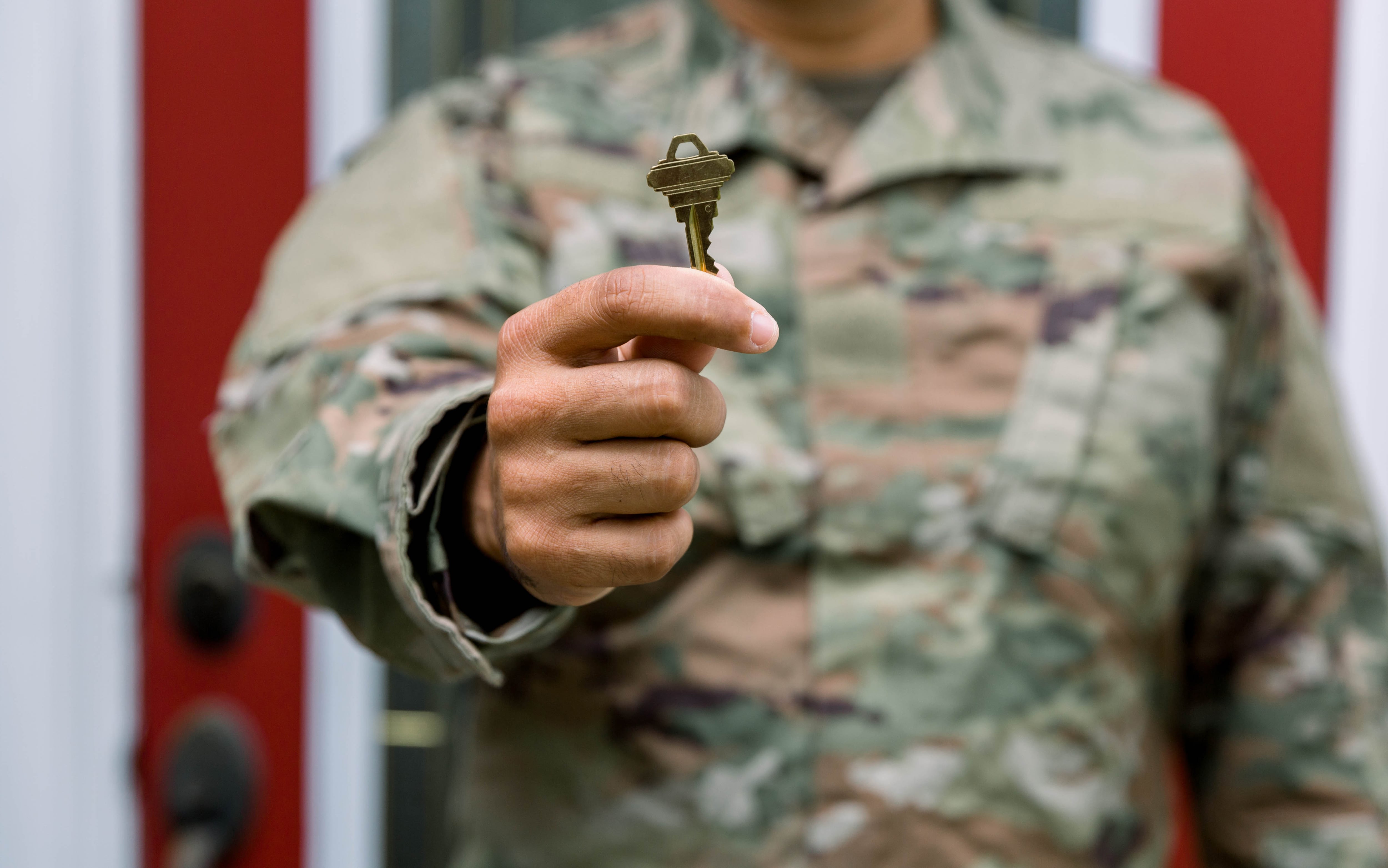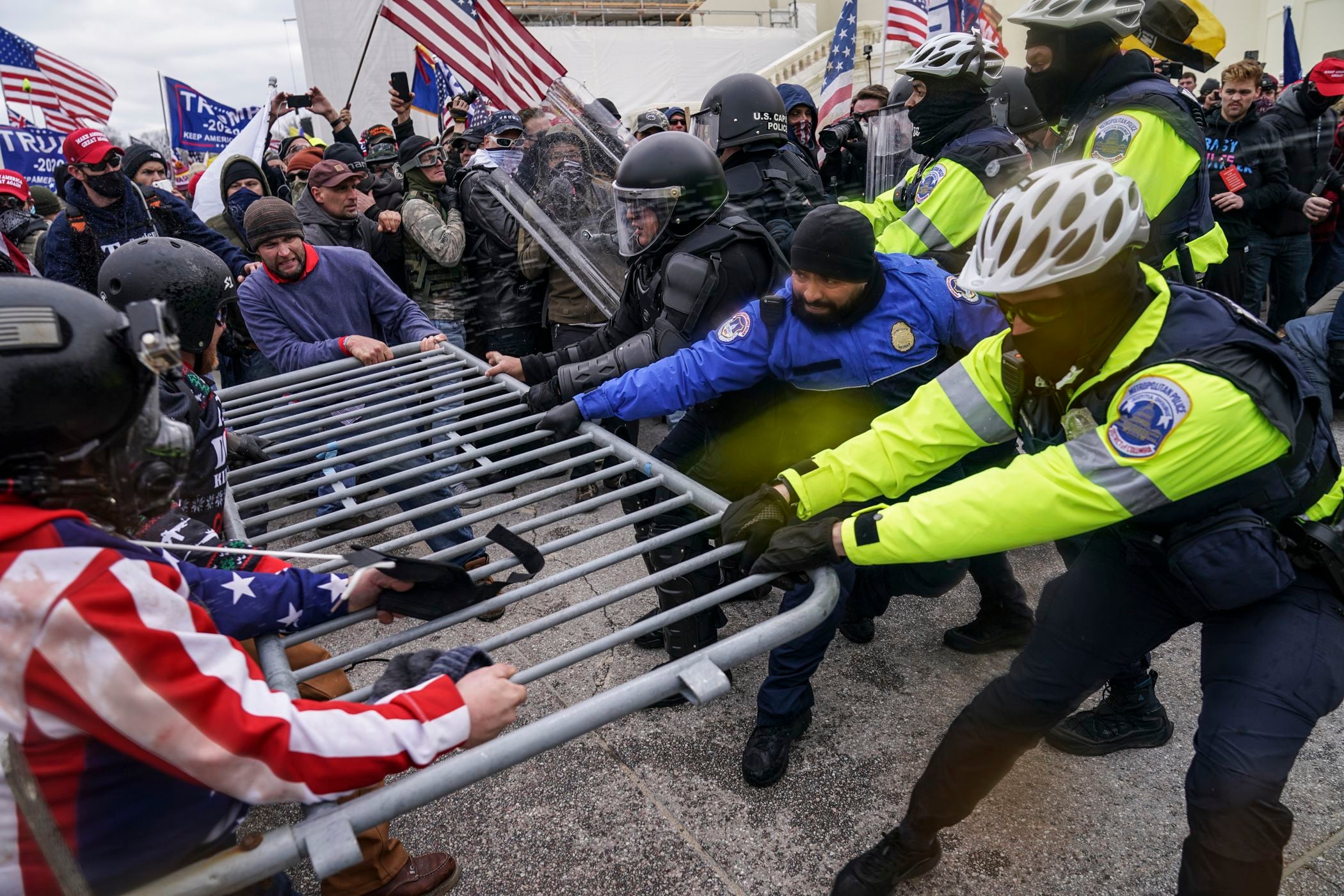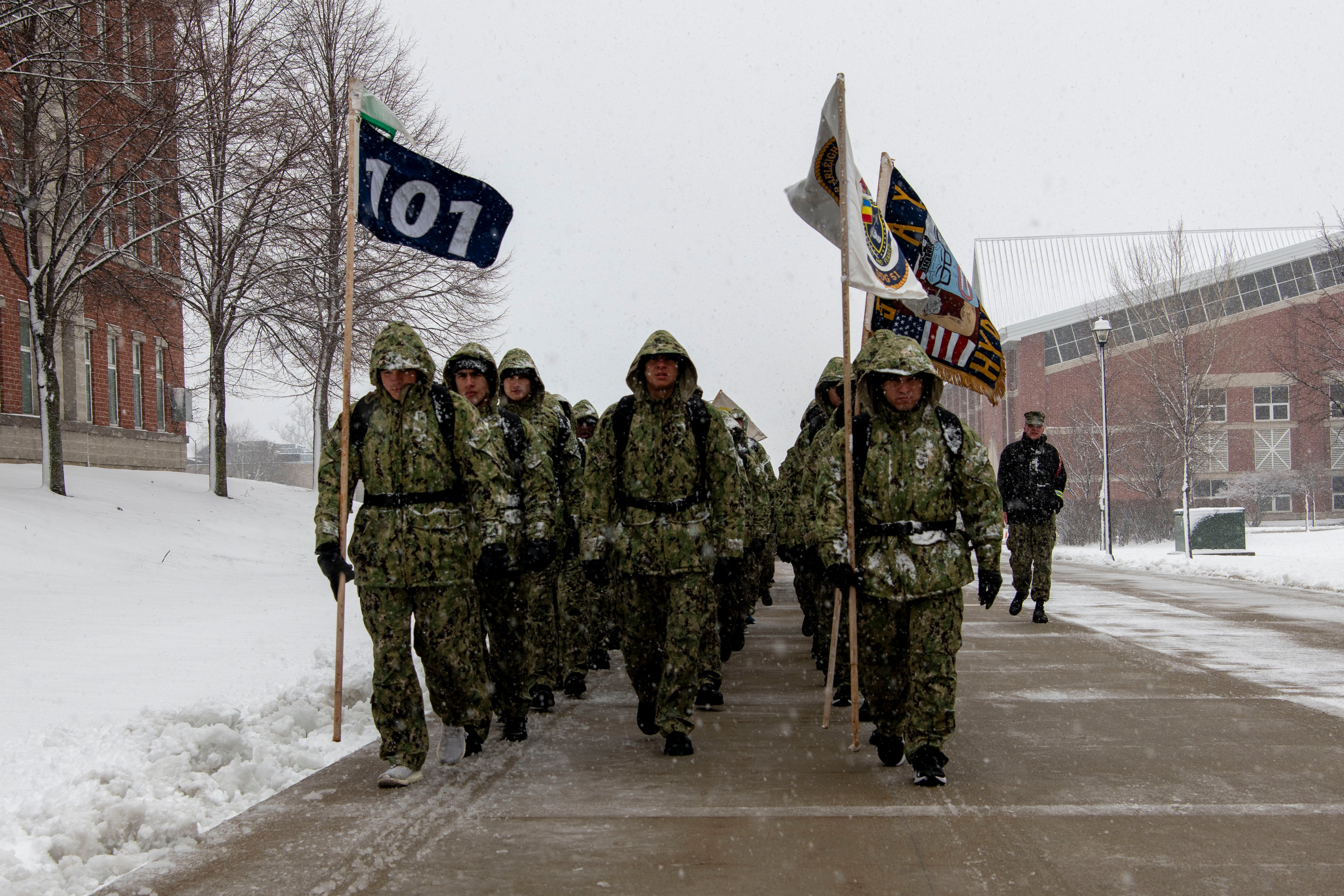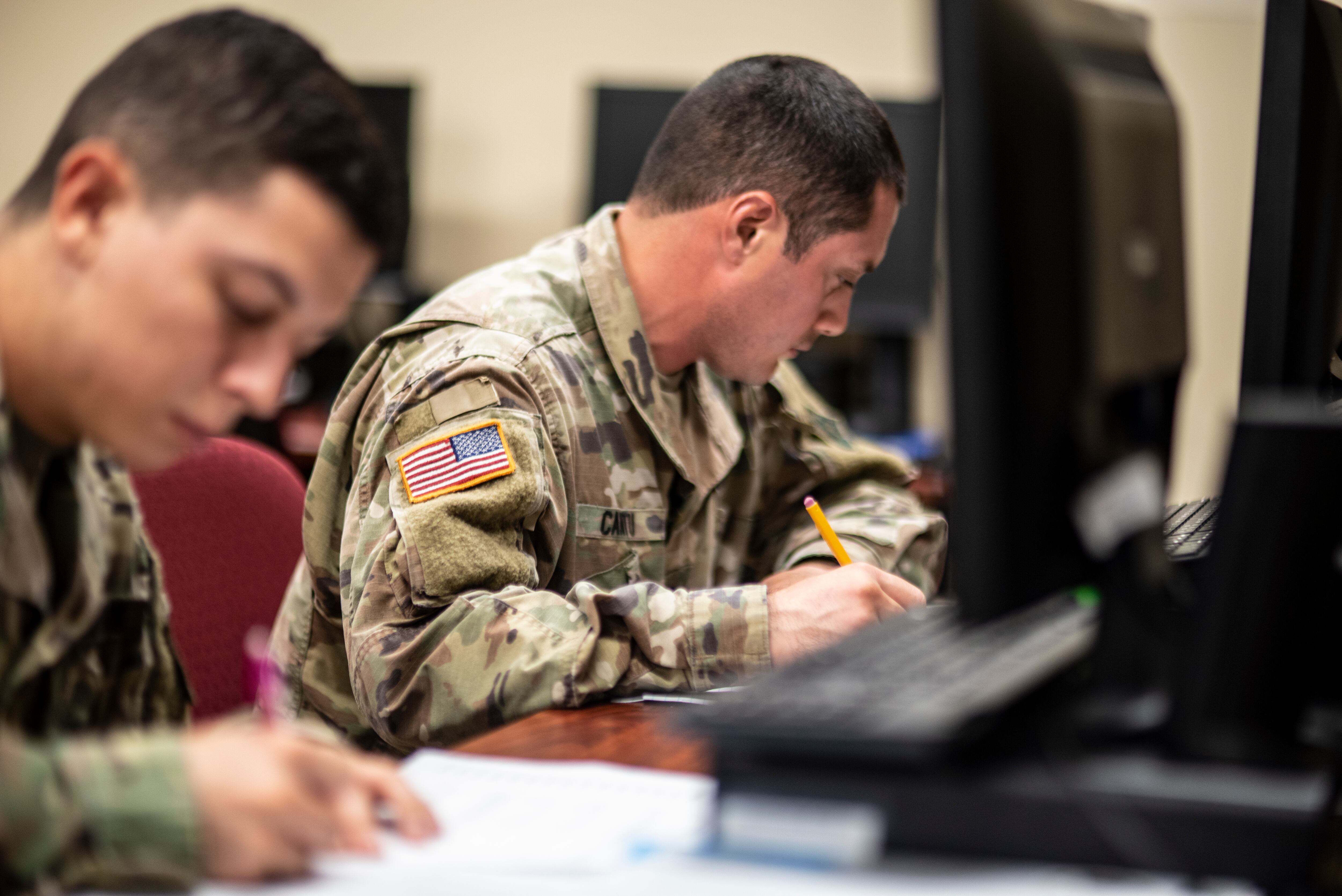The key to the revolutionary enlisted career changes proposed by the Navy's top enlisted envisioned enlisted career system is cross-training. Instead of being locked into one specialty, sailors will be encouraged to gain new skills across ratings.
Opening up multiple career fields to sailors would lead the Navy to take more of a community approach to many occupations.
Take engineering. To make his point at an all hands call where he unveiled his plan, Master Chief Petty Officer of the Navy (AW/NAC) Mike Stevens called Engineman 1st Class (SW) Mark Santos and a few other sailors to the stage at the Norfolk base theater.
After 12 years, Santos has few options. He can only serve aboard certain types of ships and even if he learns cross-over engineering skills, it's — Santos field — Stevens told his audience of sailors. Right now, all of Santos career is is a stovepipe where he must advance. There are fixed platforms he can serve on and right now, even if he learns another ratings skills, it’s doubtful he’d be allowed to work across those boundaries.
The Navy and the shipping and the outside industry is gradually moving towards diesel electric propulsion, where diesel-powered generators provide the electricity to turn the ship's screws. RIGHT? The diesel provides power to generators that in turn power the ship’s shafts.
Right now, He’d be able to work on the mechanical engines, but he’d have to rely on electrician’s mates or maybe even gas turbine electricians to troubleshoot and repair the electrical side.
"But let's say he had the aptitude for and the chance to learn and qualify for other occupational specialties such as [gas turbine systems technician, mechanical] — GSM," Stevens said. "Or if he also showed the aptitude for electrical and electronics, he could train as a gas turbine systems technician" electrical.
He could become a more complete engineering expert, better suited to work on the full scope of a diesel generation. s these specialties He could also go another direction and qualify as a machinist’s mate and learn the world of steam propulsion. Possibilities, though not endless, Stevens says are huge.
Stevens also highlighted audience member To further illustrate his point, across what are traditional community boundaries, he called down out of the audience Aviation Maintenance Administationman 2nd Class (AW/SW) Phil Young, who handles paperwork for an au currently stationed at Helicopter Sea Combat Squadron 22 at Naval Station Norfolk. He handles paperwork and other clerical functions for his squadron
"If I sent you to school for a few weeks, do you think you could do what a yeoman does?" Stevens asked Young, to which he replied yes. , directing his question at Young. "He said that yes, and he could do that work better than most yeomen."
Those working in administration-relating ratings would have the chance to qualify across ratings, from yeoman and supply to personnel specialist and career counselor, for example. Those in administration related ratings, Stevens said would have the option Stevens gave for Young. But they could also qualify as personnelmen or even train as career counselors, too.
Another example: Aviation maintenance sailors. Those in the , those currently in the aviation machinist’s mate, aviation structural mechanic and aviation electrician’s mate ratings could cross-train and become more valuable to the Navy, Stevens said. or example, Sailors from all of these ratings now can qualify to be a total systems quality assurance inspector, someone with knowledge of not only their own rating, but how all the systems in an aircraft work.
"You have to have a pretty good idea of how to do maintenance to inspect all the systems," Stevens said. "So somebody like that, if we sent them to schools and get him credentialing in those areas, by the time he's got 14 years in maybe he's not just a full systems QA, but maybe he's a qualified [Airframe and Powerplant) mechanic — then when he gets out of the Navy, maybe he doesn't have to go to school for two or three years to re-learn what he already knows."
Multiple options
Through this overhaul, Stevens says one of the best rewards is more flexibility in choosing your next job. one of the rewards for both the Navy and the sailor is a greater flexibility in assignments.
Using Santos and idea of him being able to qualify in multiple ratings, Stevens painted a picture of how that could work, using snipe Santos as an example. under this new plan.
"What happens when a sailor with these multiple [ratings] is up for orders?" Stevens asked the sailors. "Well, I can send him to anyplace where just one of those occupational specialties is necessary."
And that would open up exponentially more jobs he can apply for when in the detailing window, too, Stevens said.
"If I need to send him to a destroyer, I don’t need him there as an engineman, I need him there as a GSE or GSM," Stevens said. "Maybe you want to go to a platform that is diesel and that’s I need his mechanical or electrical skills. That’s another choice, he’d have."
One of the biggest problems Stevens has wanted to fix is how enlisted skills and specialties are confusing, even bewildering, to the civilian workforce that sailors will someday enter. key tenants that Stevens wanted to fix as they looked at rating names was the ability of the civilian workforce to know what it is that sailors do.
Speaking of AZ2 Young, to the crowd he painted a picture of this push to move yet another part of the plan — moving Navy occupations closer to their civilian counterparts.
"Today, if I went out in industry and said, 'I was say an an AZ like Petty Officer Young here' — what’s the first thing they’re going to say? ‘What’s an AZ?’"
The same thing can happen for those who are yeomen, boatswain’s mates and many more, he said.
"It's important that we also use that to connect with industry as well," Stevens said. "All of us one day will be getting out of the Navy — even me with 33 years. Eventually we all must go do something else."
The Navy, he said has spent time and money developing the Navy Credentialing Opportunities On-Line, aka Navy COOL, which that outlines credentials and certifications sailors can work towards to document their military knowledge and translate that to the civilian world. The Navy pays for many of these, just like tuition assistance.
Stevens believes civilian certifications need to be part of sailors' career paths, too.
In Santos' case, once he's qualified in multiple engineering ratings, he should be eligible to take a Coast Guard exam and become a qualified Marine Engineer, Stevens said.
Mark D. Faram is a former reporter for Navy Times. He was a senior writer covering personnel, cultural and historical issues. A nine-year active duty Navy veteran, Faram served from 1978 to 1987 as a Navy Diver and photographer.





